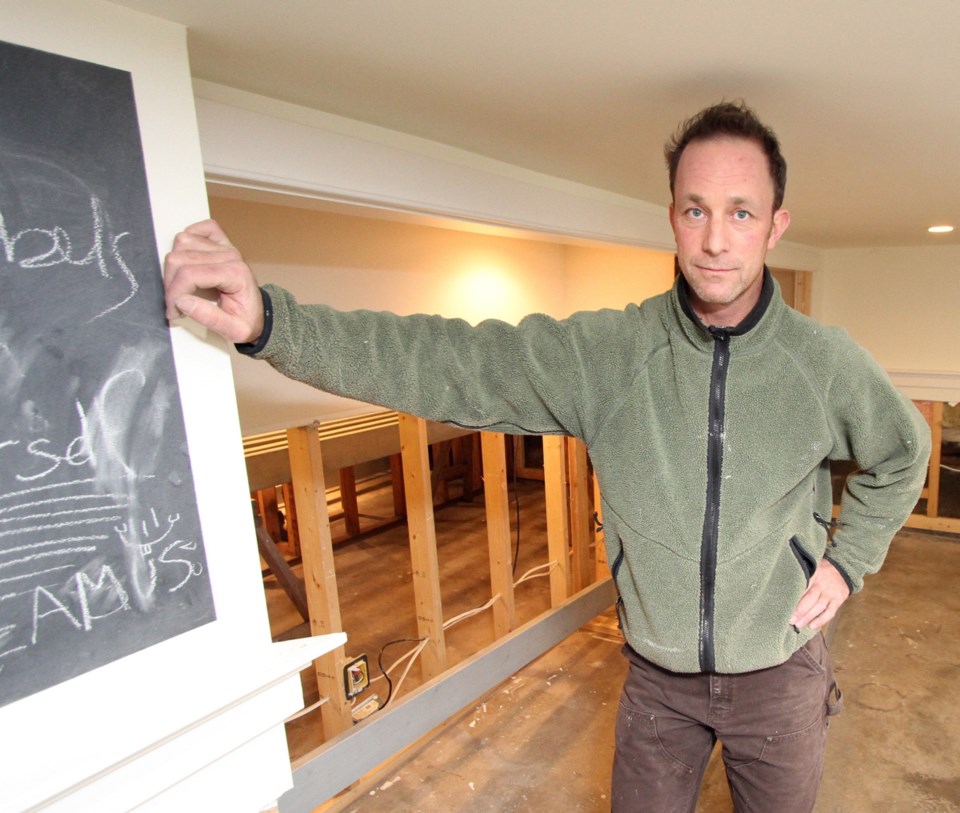Oak Bay works crews will no longer attempt to replace fire hydrants on “live” lines following an incident last month in which 16 homes on Bowker Avenue were flooded.
A review of the Nov. 20 incident by Oak Bay administrator Mark Brennan highlights several problems and recommends policy and procedural changes.
The 18-inch water main broke when a public works crew followed “a long-established practice” of replacing a fire hydrant on a live line — a procedure in which the water is not shut off before the replacement is installed.
The hydrant being replaced was on an asbestos concrete pipe with a type of valve that is no longer used but was common in the 1960s, the report says.
“These types of valves are not affixed to the main and need to be held in place,” it says. “A trench is dug and bracing is installed in order to hold the valve in place while the hydrant is being replaced. In this instance, the bracing gave way, causing the valve to slide off the main.”
While replacing hydrants on live lines is a long-established procedure in Oak Bay, it’s not the norm in several other municipalities, says Brennan, who recommends a shutdown of the line on both sides of a valve before such work is undertaken in future.
“We know that there were things we could have done better,” Mayor Nils Jensen said in a statement. “What’s important now is that we address the harm that was caused and make sure that we learn from our mistakes and make sure they’re never repeated.”
The November incident was exacerbated by a couple of 1960s-era shut-off valves that closed with a left turn instead of the standard right-turn closure, the report says.
Brennan says the first four valves were turned within 45 minutes — a procedure that should have shut off the water supply. However, one of the valves was a “left-turn” valve and was initially in the closed position.
“In attempting to close this valve, public works staff unknowingly opened it. As staff moved further out in their attempt to shut off the water supply, this scenario actually occurred again at another intersection. It is this complication that resulted in the delay in finally shutting off the water,” the report says.
Ultimately, the water flowed for six hours.
Brennan recommends a complete inventory of the system so crews are more aware of any anomalies.
His report also suggests the fire department be called to assist with future breaks as soon as it is apparent that property damage has or is likely to occur. Likewise, police are to be notified immediately about such incidents in future.
Brennan says communications were problematic during the event, and recommends reviewing the emergency preparedness manual.
Bowker Avenue resident Martin Scaia, whose family of five is still living in a Victoria hotel while repairs are made to their home, agrees that there were major communication problems during the flood.
“In terms of the municipal workers, there was no communication,” Scaia said. “Once the Oak Bay Fire Department arrived, that’s when things really happened … but that wasn’t until 21Ú2 hours after the fact.”
Brennan also suggests appointing a primary liaison to deal with affected residents so they don’t feel “abandoned” by the municipality.
The report will be considered by Oak Bay councillors at their first meeting in January.



